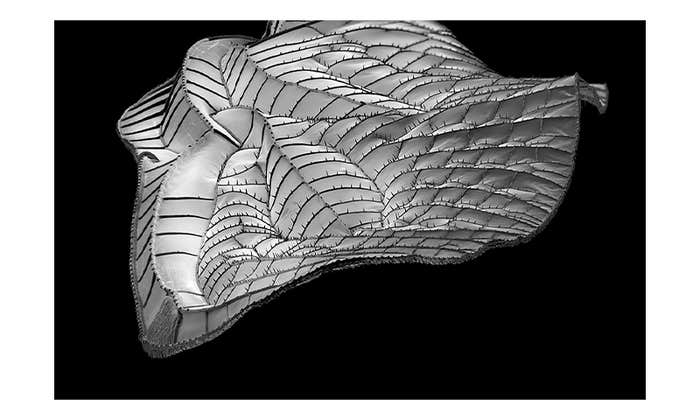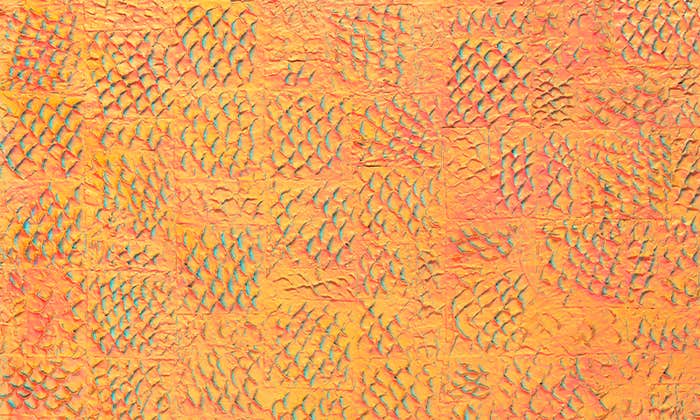The Man Who Loved Physics
By Alan Lightman
Several years ago, I attended a Buddhist retreat in which I was introduced to the idea of the “retinue,” a constellation of influential and supportive people whom one imagines in an enveloping cloud as one meditates. Mentors. I took the concept one step further and decided to create an actual photo montage that I could hang on the wall above my desk: my childhood piano teacher, my high school English teacher, my rabbi, mentors in science, writers who encouraged me—in all, 20 people who had profoundly influenced me. Some members of my retinue were still living, some not. In some cases I could find the photographs myself. In others, I had to contact the mentors.
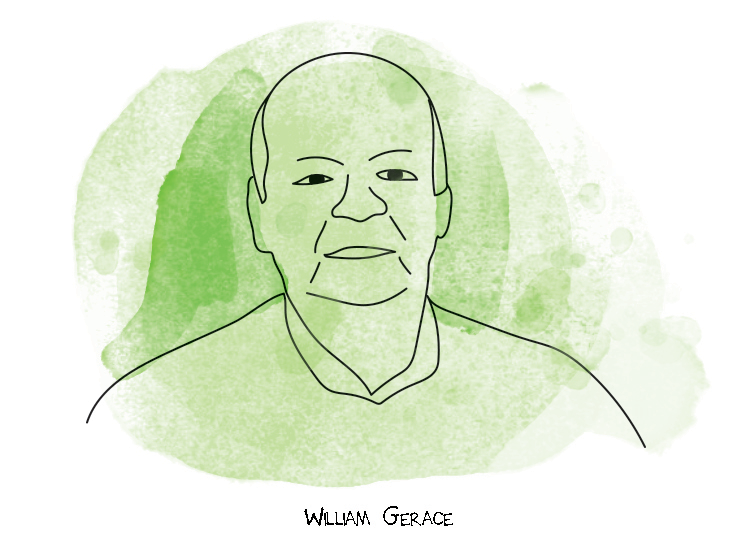
When I finally tracked down William Gerace, who introduced me to physics nearly 50 years ago, he was puzzled as to why I should desire such a montage. We had not spoken for decades. Reluctantly, he sent me an old, out-of-focus photo of himself, dating back to the days when I knew him. Now, Gerace is a professor of science education at the University of North Carolina at Greensboro, after a 30-year career as a professor of physics at the University of Massachusetts Amherst, during which time he made the transition from theoretical nuclear physicist to leader in science education and co-founder of the Scientific Reasoning Research Institute at the University of Massachusetts, Amherst.
When I knew him, in the late 1960s, he was a lowly instructor in physics at Princeton, where he had recently received his Ph.D. I was an undergraduate. The photo shows a man in his late 20s, about 5 feet 6, slight in build, dark hair beginning to thin, dressed in a button-down shirt and blue sweater, and a Mona Lisa smile.
Each new mathematical technique Bill taught us was offered with the enthusiasm of a 12-year-old boy showing his friend a strange new butterfly.
I first met Bill Gerace during a physics lab my sophomore year. I was inept at experimental science. One day, he approached me in the shadows of the lab, introduced himself, and posed the following (theoretical) problem: If you put a frictionless bug on a frictionless clock, starting at the 12 o’clock position, and the bug starts sliding clockwise, at what hour mark does the bug fall off? I went back to my dorm room, wrote down the equations to be solved, and came back to Dr. Gerace the next morning with the answer. (The angle of fall-off is cos-1(2/3) or about 48 degrees, corresponding to a time of 1:36.)
At that point, Gerace invited me to join a handful of undergrad physics majors he was quietly mentoring, each of us given our own desk in his sprawling office in the basement of Palmer Laboratory. Our own desks! There was a blackboard, of course. As I remember, Gerace had suffered some altercation with the senior members of the department. So he created his own miniature, unofficial university within a university. Between our official classes, we members of Gerace’s tiny physics guild taught ourselves relativity, quantum mechanics, and other mysteries and beauties of modern physics, under the master’s guidance.
Bill loved physics, and he infused us with that love. Each new topic or mathematical technique he taught us was offered with the enthusiasm of a 12-year-old boy showing his best childhood friend a strange and marvelous new butterfly he’d discovered and kept secreted away in a small box until this moment of revelation. Lagrangians, Poisson brackets, and Lorentz boosts were precious and delicate items, taken out of their boxes and presented to us in beautifully chalked equations on the blackboard. And Gerace was a superb explainer. In my mind, I can see him standing at the blackboard now, wearing a long-sleeve white shirt with the sleeves always rolled up above the wrists, the room cluttered with physics journals and textbooks and “preprints” of papers not yet published, clanking sounds from the room next door where some ungainly piece of apparatus was being constructed, an affront to the sublime and abstract world of equations.
More than the particulars he taught us, Bill empowered us. He made us feel special, and strong. I remember one moment in particular. He and I were standing in one of the dark and damp hallways of the Palmer basement, and he said to me, “The only difference between you and me physics-wise is that I am a little further along in my career.” That may have been the first moment when I realized that I could be a professional physicist.
I also remember evenings when he invited us to his modest apartment for dinner. We often had spaghetti with mushrooms, which he called “shroons.” On those occasions, we talked about physics, but we also talked about other subjects. Without being overbearing or assertive, Gerace had gently taken us under his wing for our full education, both within science and without, as the master painters did with their apprentices in the 17th and 18th centuries.
By my senior year, Gerace’s little group had dwindled in size. Some of its members had graduated, and Gerace himself was in the process of moving to UMass Amherst. I’d been studying radioactive decay in my courses, and Bill suggested we work together on calculating the lifetimes of new chemical elements, heavier than those in the known Periodic Table. He proposed the project as if I were a colleague, an equal, another professional physicist. When the paper was published, he placed my name first. And I learned a final lesson from this great teacher: generosity.
Alan Lighman, physicist and novelist, is Professor of the Practice of the Humanities at MIT. His book Einstein’s Dreams was an international bestseller and has inspired dozens of theatrical and musical productions worldwide. His book, The Accidental Universe, was chosen by BrainPickings as one of the best science books of 2014; Screening Room, a memoir of the South, was chosen by the Washington Post as one of the best books of 2015. His most recent books are In Praise of Wasting Time and Three Flames: A Novel.
Have you ever been at sea in a dense fog, when it seemed as if a tangible white darkness shut you in, and the great ship, tense and anxious, groped her way toward the shore with plummet and sounding-line, and you waited with beating heart for something to happen?
If there’s a better description of what it feels like to wait for the mass spectrometer to spit out the first data point of a brand new experiment, I can’t imagine what it would be. However, that passage wasn’t written by a chemist, or a physicist, or a biologist … it was written by a 20-something woman who could neither see nor hear.
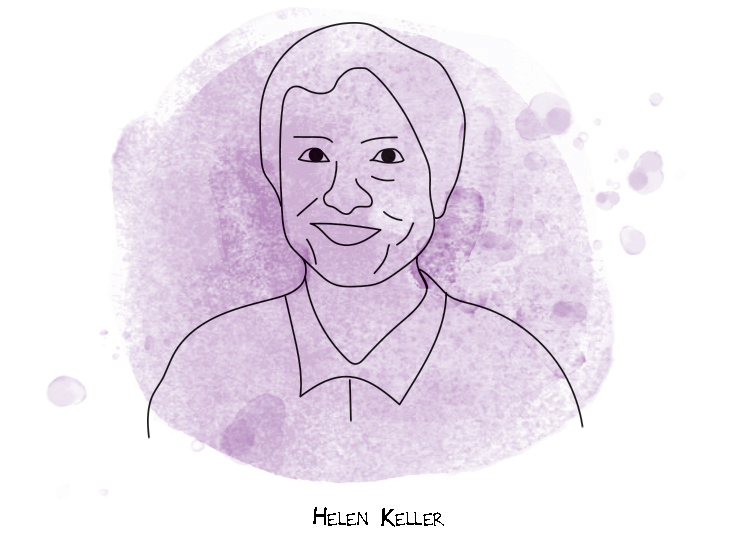
I have always been taken by the books of Helen Keller, for, in essence, they are textbooks meant to teach us how to observe life. Her best-known work, The Story of My Life, was published in 1903. Within it, she recollected her early years, spinning the dispersed wool of her babyhood into the tangled threads of her childhood. These would eventually be woven into the whole cloth of adulthood with the help of Anne Sullivan, and eventually immortalized in the popular three-act play, The Miracle Worker.
Born in Tuscumbia, Alabama, in 1880, Helen Keller thrived as a healthy infant for 19 months, until she fell ill with what was probably meningitis. She survived the raging fever but permanently lost both her sight and her hearing.
Keller describes the outcome of her illness as having “plunged me into the unconsciousness of a new-born baby,” and then recounts how this new state became normal: “I got used to the silence and darkness that surrounded me and forgot that it had ever been different.” The next two chapters describe the five-and-a-half years that Keller struggled to understand the world she was living in and communicate with those around her, without the benefit of a common language.
Each time I read Helen Keller’s work, I am reminded that I should use all of my senses as I study the world.
Most people are familiar with the moment when Anne Sullivan helped the 7-year-old Keller make a tactile connection between the concept of running water and the motion of hands spelling out its English name, “W-A-T-E-R.” Keller herself described that moment as “my soul’s sudden awakening.” But Keller’s writing makes it clear that her soul—as well as intellect—was actually wide awake well before that particular epiphany.
In the short two-and-a-half chapters of her autobiography that relates the years between infancy and before the arrival of Sullivan, Keller does an extraordinary job of describing how an experimental scientist’s subconscious mind works. She describes her first efforts at awareness in terms of “fleeting memories, if, indeed, they be memories, it all seems very unreal.” The richly detailed involuntary memory that follows would have made her contemporary Marcel Proust jealous (though it’s doubtful he ever read it). Perhaps the reason that these earliest impressions resonate so much with me, however, is that they mostly revolve around the plants in the “old-fashioned garden [that] was the paradise of my childhood.”
Throughout these early chapters, Keller gushes over the violets, lilies, roses, honeysuckles, Southern smilax, trailing clematis, “drooping jessamine,” and other flowers that were planted throughout her family’s cottage property. In the complete absence of sight and sound, Keller navigated the world for years using exclusively smell, touch, and taste. We can almost smell and touch with her when Keller remembers the roses of her childhood home:
They used to hang in long festoons from our porch, filling the whole air with their fragrance, untainted by any earthy smell; and in the early morning, washed in the dew, they felt so soft, so pure …
Keller relied upon her intimate familiarity with the flowers and plants near the house in order find her way around; for example, the feel of the “square stiff boxwood hedges” that marked the edge of the property. She differentiated each tree and fencepost by the pattern of the English ivy wrapped upon it. That fateful well-house where she first learned to sign? Keller remembers getting there by walking toward the “fragrance of the honeysuckle with which it was covered.”
“My hands felt every object and observed every motion, and in this way I learned to know many things,” explains Keller, going on to describe how she recognized each article of clothing by slight differences in the feel of the fabric, and thus helped to sort the laundry. Keller sensed the air moving when the front door opened, and the floor vibrating when it was trod upon, and so learned to anticipate the comings and goings of the people that she knew.
The simple joys of childhood were not lost on Keller: She loved to pet the cows while they were being milked, grind spices, pick through raisins, and lick stirring spoons. Each time I read Keller’s work, I am reminded that I should use all of my senses as I study the world, that I should periodically scour the corners of my imagination for hints that my subconscious may be dropping, fueled as it is by information that I cannot recognize as having consciously acquired.
But because interpersonal social interactions rely so heavily upon language and facial expression, Keller was shut out from most of what passed between the people around her; she wrote eloquently about how her unfulfilled need for connection tortured her early years:
Sometimes I stood between two persons who were conversing and touched their lips. I could not understand, and was vexed. I moved my lips and gesticulated frantically without result. This made me so angry at times that I kicked and screamed until I was exhausted … my failures to make myself understood were invariably followed by outbursts of passion. I felt as if invisible hands were holding me, and I made frantic efforts to free myself. I struggled—not that struggling helped matters, but the spirit of resistance was strong within me; I generally broke down in tears and physical exhaustion.
With simple honesty, Keller describes her behavior and frustration. She tells of spitefully breaking toys, teasing the dog until it learned to avoid her altogether, and purposefully knocking her baby sister out of the cradle. The people who were stuck working for the Keller family bore the worst of Helen’s anger: She describes how she repeatedly kicked her nurse, locked her mother in a pantry, and bullied the cook’s daughter. Only much later, after Anne Sullivan had taught to her to sign using English, had Keller “realized what I had done, and for the first time I felt repentance and sorrow.” Unsatisfied with the world she knew, Keller was tormented by her inkling that there was much more to know, and she extended this torment to the people around her.
The climax of Keller’s childhood occurred during the summer of 1887 when Anne Sullivan convinced her that “everything had a name, and each name gave birth to a new thought.” Her joy in finding that she was not alone in her need to label and categorize the world’s objects was unbridled, even in its telling more than a decade later:
As we returned to the house, every object which I touched seemed to quiver with life. That was because I saw everything with the strange, new sight that had come to me.
This beautiful description of how taxonomy can awaken us to our surroundings has long been my favorite answer as to why I still require students to memorize the anatomy of the flower, the epochs of the Cenozoic, the reactions of the Krebs cycle. “As my knowledge of things grew, I felt more and more the delight of the world I was in,” wrote Keller. As a teacher, I am fortunate to see this play out—to see this same flower open—year after year in my classroom.
Keller did nothing to earn the privilege of full-time attention from a brilliant educator—she also did not deserve the fever that closed her ears and eyes forever. She was born to a measure of unique talent as well as unavoidable hardship. In response, she persevered through painful trial and error, while maintaining a faith in her own abilities. Later, when she had the opportunity to recount her life’s journey, her commitment to authenticity compelled her to include events during which she had been at her best and worst. Most of all, she shared with us her deep joy in the rewards that come from learning about one’s world. In so doing, she gave us an autobiography that has held up for more than a century. In my book, that makes Helen Keller a heroine—in fact—in my book, her words form the epigraph:
The more I handled things and learned their names and uses, the more joyous and confident grew my sense of kinship with the rest of the world.
Hope Jahren is a professor at the University of Oslo who studies stable isotope biogeochemistry. She is researching the interaction between land plants and the environment, particularly during times of climate change. Her memoir, Lab Girl, was the 2016 winner of the National Book Critics Circle Award for Autobiography. Her most recent book is The Story of More: How We Got to Climate Change & Where To Go From Here.
A Radical for the Poor
By Robert Sapolsky
Germany, 1865. A man, wealthy and powerful, gets into an argument with a colleague who calls him out for being the habitual liar that he is. Enraged, he challenges his accuser to a duel. The challenger has a military background and is no stranger to weapons and dueling. The challenged, a meek physician scientist, has probably never been around anything more menacing than a Bunsen burner. This is no match; the blowhard military man is virtually guaranteed to kill the scientist.
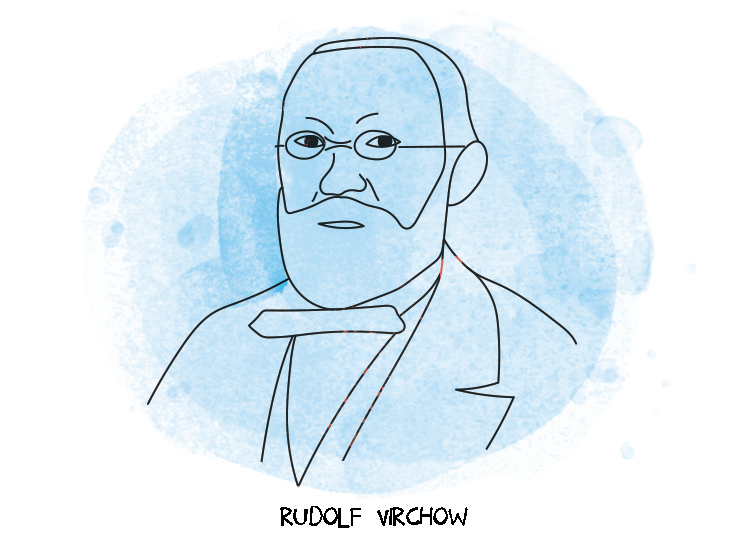
As per custom, the challenged gets to choose weapons. Pistols? Swords? Fencing foils? No, the challenged had a better idea: sausages. In his laboratory, the scientist studies the parasitic roundworm Trichinella spiralis. His response shifts the odds from 1,000-to-1 to 50-50. One sausage will be injected with saline, the other with a hefty dose of a live culture of Trichinella, and the challenger chooses which one to eat, while the other eats the remaining sausage. Bummer if you get the one filled with the parasite. With that dose, you’ll have massive inflammation of your muscles, lungs, heart, and brain, probably followed by multi-organ system failure and a horrible death. Faced with even chances, instead of a bully’s advantage, the challenger quickly withdraws his challenge.
That alone would make the scientist, Rudolf Virchow, one of my heroes. But more importantly, Virchow almost single-handedly invented the notion that good science can be a weapon in the service of social justice, at a time when there was damn little good science or social justice. In the process, he generated one of my all-time favorite quotes. In it, he uses “physician” in the broad, 19th-century sense of the word, which means that it includes the biomedical scientist and researcher, along with the clinical physician. The quote concerns the adverse effects, scars, and pathologies caused by being poor, by being a chronically subordinated human mired in the corrosive psychosocial stress of poverty. “Physicians,” Virchow wrote, “are the natural attorneys of the poor.” As a neurobiologist and primatologist who studies what the stress of social inequality does to health, Virchow’s quote could serve as the rationale for my career.
I was introduced to Virchow pretty indirectly. We all have our period of adolescent imprudence, where at a later age, we’ll look back and wonder, “What was I thinking?” For me, my errant youth involved studying neuroanatomy. In college, I got obsessed with the subject: Some tiny, obscure little part of the brain has a multisyllabic name, and it sends a multisyllabically named projection to another tiny sub-region, which in turn projects to eleventy other regions. Whoa, you can memorize all those names and connections and tell them to everyone you know! I was sure this exercise in folly would attract girls.
I had a favorite neuroanatomical term. The brain is wrapped in three layers of insulation, called the meninges, and in between the two inner ones is a tiny, microscopic compartment called the Virchow-Robin space. You can’t get more obscure than that, and tossing out the term buffed up my cachet among my fellow neuroanatomy dorks. I had no idea who Robin was, but Virchow was this Virchow. When not responding to dueling challenges, I learned, Virchow was, among other things, the first to thoroughly describe the Virchow-Robin space. I was delighted to think that he must have been the king of itsby-bitsy reductionist science, removing his monocle to peer through his microscope.
We all have our period of adolescent imprudence, where at a later age, we’ll look back and wonder, “What was I thinking?”
As a physician and scientist, Virchow basically founded modern pathology, and started a pathology journal that still bears his name. He published a monumental cell biology text, more than 2,000 scientific articles, first described and named “embolism,” “thrombosis,” “spina bifida,” and “leukemia.” But, showing his focus wasn’t just on the miniscule and reductive in science, he was also a pioneer in the field of public health. His roundworm research on how meat could be a vector for Trichinosis helped spawn the concept of meat inspection.
So Virchow was the master of two very different intellectual domains, which is cool. But he was also a politician and a newspaper editor, and an archeologist who accompanied Heinrich Schliemann, discoverer of Troy, on expeditions. He did some of the first studies of Neanderthal bones, and founded Germany’s first anthropological society and journal.
So the guy was a polymath, big time. But most importantly and heroically to me, virtually all of Virchow’s varied interests were interconnected in a passionate way. Virchow was entwined with two shattering events. One was the 1847 typhus epidemic in Prussia, which he battled helplessly. The main lesson he took from that disaster was the extent to which being society’s downtrodden translates into poor health. The other was the failed revolution of 1848, in which he participated (which cost him his professorship). The main lesson he took from that disaster was how brutally those in power can crush the downtrodden who dare to question the nature of things.
From this came an intense commitment to a progressive agenda. Virchow railed against the pseudo-scientific social Darwinism. He fought to decrease the power of the Catholic church in Germany. As an anthropologist, he was a leading anti-racist, conducting studies that showed, among other things, that Jews shouldn’t count as a separate (i.e., inferior) “race.” He trained a new generation of doctors, one of whom became the father of public health in Chile and passed on Virchow’s vision of medicine’s social responsibility to a medical student named Salvador Allende. As a politician, he became the leader of the left-leaning radical party in the Reichstag. It was during his attempts to decrease the size of the military budget that he called none other than the Minister President of Prussia, Otto von Bismarck, a liar, resulting in the sausage duel.1
All in all, a remarkable, inspiring man. Plus, he had one great beard.
Robert Sapolsky is a professor of biology, neurology, and neurosurgery at Stanford University, and author of A Primate’s Memoir and Why Zebras Don’t Get Ulcers. His most recent book is Behave: The Biology of Humans at Our Best and Worst.
Bridging the Two Cultures
By Priyamvada Natarajan
I was an inquisitive child and my parents encouraged me and actively cultivated my curiosity. My first truly independent adventure, when I was 10, was to secretly take a public bus on my own to the Delhi Public Library. Given how quickly I was wolfing books down, I didn’t want to pester my parents to drive me there every other day. So I marched off, got on the bus, barely able to manage my bulging knapsack, to return books and check out new ones. A kind stranger, who later became a family friend, followed me home one day and admonished my parents for a letting a young child go unsupervised on a bus.
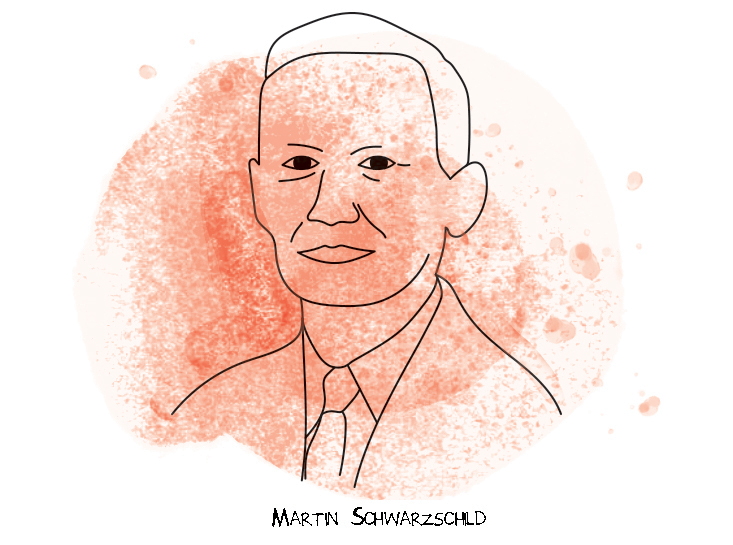
The person who fueled my reading, who instigated my pilgrimages to the library, was my English teacher in middle school, a young visiting American, Mr. Drew Carter. Mr. Carter loved my writing and encouraged me to read more. Soon American writers and poets—Walt Whitman, Emily Dickinson, Robert Frost, and Ernest Hemingway—entered my universe. Standing tall at over 6 feet, with a sharp jaw and finely drawn features, Mr. Carter towered above us all. He dressed sharply, in what I now know to be a preppy style, but most of what one noticed about him were his sparkly, mischievous, and yet kind eyes.
Mr. Carter was convinced that I had a special mind, one in which letters and numbers danced with equal grace. I was obsessed with puzzles and numbers, and read Martin Gardner’s “Mathematical Games” column in Scientific American avidly. Meanwhile, I was devouring fiction, too. Jules Verne and Antoine de Saint-Exupéry were special favorites.
At the time, though, I was determined to become a scientist. Mathematics and science were my favorite subjects, and it was not an easy task to turn my attention to literature and introduce me to the joys of poetry. But Mr. Carter did. It was not until much later that I realized that he had imprinted on me the belief that there were not two cultures, that the true life of the mind blended the arts, humanities, and science. A true intellectual sees no disciplinary boundaries.
Mr. Carter made me feel capable and encouraged me to write. He read and critiqued everything I wrote. He made me strive to think more and aspire to write better. When I was 12 years old, he was diagnosed with cancer. I was devastated; my tidy world had come asunder. Cancer took him swiftly, leaving behind a hole in my idyllic-till-then childhood.
It was hard to accept that Mr. Carter was gone. I envisioned him walking briskly, with his floppy hair, into our class, as though he had gone off on vacation and simply forgot to let us know. He left me a card, one with a drawing, a quote from The Little Prince, and a message: “Dare to Dream, Pri.” I wrote him letters as a way of coping with my grief and loss. But resilient like all children, I moved on.
At the Massachusetts Institute of Technology, I majored in mathematics and physics, but was enamored with the history of ideas. I decided to pursue this new direction and do a Ph.D. in the history and philosophy of science, and enrolled in MIT’s Science, Technology, and Society program. I planned to go back to physics after a couple of years and then return to wrap up my dissertation. This turn perplexed everyone around me. I was on a fast-track toward becoming a physicist. What was the need for this detour?
Mr. Carter imprinted on me the belief that there were not two cultures, that the true life of the mind blended the arts, humanities, and science.
To me it was clear. It was a compulsion to build an intellectual life that blended the so-called two cultures. It was a tricky time in science studies. Social constructivists were all the rage and that collision with my scientific world view was a real challenge. Working on my thesis proposal, on the impact of simulations on epistemology in scientific fields, where controlled experiments are impossible, I began to delve into the history of computation and simulations. I was deeply interested in the relationship between simulations and reality. This led me to get in touch with one of the pioneers of numerical modeling, an eminent retired astrophysicist at Princeton University, Prof. Martin Schwarzschild.
I went to Princeton to interview him, during the cold and wet fall of 1992. He was unwell and we had planned to speak for a couple of hours on a Saturday afternoon. We met and continued the conversation till Monday evening! Our conversation meandered and touched on many topics—we talked about everything, really—a life in science; what it meant to be physicist; the wonders of the cosmos; recipes for happiness and contentment; and how to define one’s own version of success.
It was a remarkable encounter, one that ended up altering the trajectory of my life. Schwarzschild recommended that I revert back to science and go to Cambridge for a Ph.D. in astrophysics. I had never imagined going to graduate school in the United Kingdom. He was incredibly generous, kind, and excited about my potential career in astrophysics and helped me sketch the contours of my next dream. His faith in my future startled me. His gentle nudge inspired me to embark on an entirely new adventure.
The unreachable, the invisible, and mysterious have always intrigued me. The fact that one cannot perform controlled experiments with the universe fascinated me and drew me to working on dark matter and black holes. Making sense of the cosmos, driven by data, was where I found my calling. I had a wonderful and productive time in Cambridge, where prior to finishing my Ph.D., I was elected a fellow of Trinity College. By then, I had started my work on mapping dark matter using gravitational lensing, proposing a new way to infer its granularity.
The nature of dark matter, the dominant component of our universe, remains elusive. Dark matter peculiarly does not emit, reflect, or absorb light, though it deflects it. I often end my talks with a slide that reminds me of the essential and enduring impact that my heroes have had on me. I know the slide would make Mr. Carter proud of me, and happy to see what I have made of myself. It is a quote from The Little Prince that Mr. Carter included on his last note to me. “Here is my secret. It is very simple: It is only with the heart that one can see rightly; what is essential is invisible to the eye.”
Priyamvada Natarajan is a professor in the Departments of Astronomy and Physics at Yale. Recipient of many awards and honors, her research is focused on mapping dark matter and understanding the formation, growth, and evolution of black holes. Her first book, Mapping the Heavens, was published in 2016.
Magician of the Stars
By Caleb Scharf
Being a scientist can be like willingly entering into a Roman gladiatorial contest. The hours are long, there’s a rank smell of indentured servitude, and at any minute your colleagues may attempt to eviscerate you for the pleasure of the crowds.
A lot of the time we can look beyond these challenges because we have an innate need to explore our curiosity. Or perhaps (shockingly) because we feel that a life spent in pursuit of knowledge is still a noble and useful thing. At other times I suspect we only stick around because we’re playing the real-world equivalent of a video game—conditioned to crave the chemical release from a momentary discovery, or a satisfactory fitting of a curve to data points. Yes, really, that can do it for you.
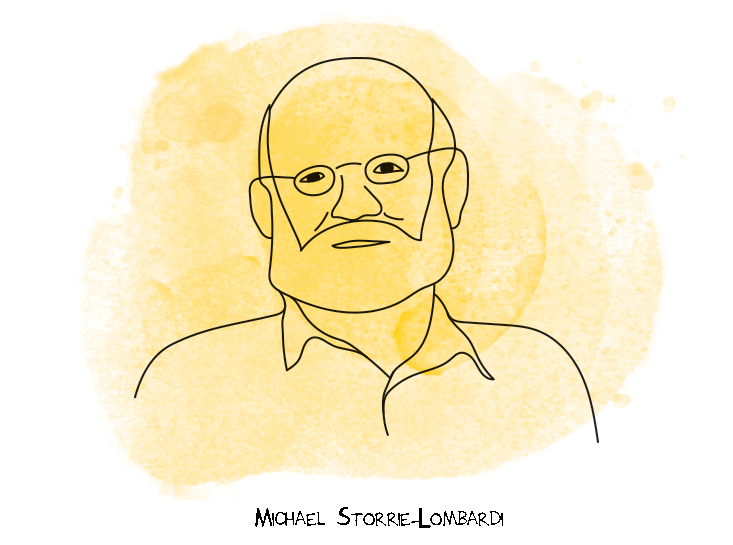
I’ve been awfully lucky in my career to be exposed to many extraordinary thinkers and many situations that have been truly mind-expanding. But if I’m honest, the instances of pure unbridled joy in science have been thinly scattered, and most of them I can point to as being the result of just a few people. Some of those best moments are because of one person in particular—the scientist Michael Storrie-Lombardi.
Michael’s a marvel, a maverick, and a catalyst. He’s also a physicist who’s an M.D., as well as an early computer entrepreneur, and in my view one of the first modern astrobiologists. I met Michael when I was a graduate student at the University of Cambridge’s Institute of Astronomy and Michael was gleefully chasing his tiny son across the floor of the morning coffee room. My first thought was, “Who the hell is this guy?”
I soon got to watch Michael working his magic on others. That magic included firing up a whole research effort on classifying galaxies using artificial neural networks. This was the 1990s, so many, many years before Big Data or Deep Learning became buzzwords. It was innovative, heady stuff.
Being a scientist can be like willingly entering into a Roman gladiatorial contest. The hours are long and there’s a rank smell of indentured servitude.
To my astronomy-riddled graduate brain, Michael was a beacon to a promised land of scientific wonders without borders. Conversations might start with the then-fresh challenges of the Human Genome project, and end up with an idea for a self-sequencing DNA system where genetically engineered ribosomes would emit photons according to the nucleotides they were sliding over. Or we’d talk about the information content of non-linear chemical oscillators, only to end the night coding up a simulation to settle some esoteric argument. Lunacy? Probably, but so much fun because it was science for sheer pleasure—guilt free, worry free.
For a while in the 1990s and early 2000s Michael worked at NASA’s Jet Propulsion Laboratory, once again playing the role of scientific instigator and catalyst. But JPL couldn’t quite contain him. One day I gave a call to see how things were doing. “Okay,” he said, “but you know I’ve started a new institute?” I did a double-take and asked where it was based. “Oh, in my basement,” came the calm reply. “I’m getting the servers set up this week, before I go to Antarctica to look for microbes.”
This was a potent lesson for me. What do you do when you’re dissatisfied and need to make better use of your resources? Many of us in science suffer the slings and arrows very ungraciously. But what I learned from Michael was that we really are masters of our own domain—there is nothing truly stopping us from applying an entrepreneurial spirit, getting non-profit status, and carrying right on doing the important stuff.
It’s a mindset that’s stuck with me. A year ago I spent a crazy six months shuttling between New York and Tokyo in order to work with a remarkable new group exploring the science of the origins of life. I thought it was a mad stretch from my astronomical background, but I also knew I couldn’t resist, and it led to an unexpected and fresh insight—a proposal for quantifying the relationship between planets and their potential for initiating life. That research now sits proudly in a peer-reviewed journal for all to argue over. I’m pretty sure I did all of this because of those early inspirations.
To this date Michael and I have only ever managed to really write one research paper together, and that paper struggled with peer review because, big surprise, it didn’t really fit any preset slot in the scientific landscape. It was based on an observation (by Michael) that the element phosphorus, that is so absolutely critical for terrestrial biochemistry, is also shockingly under-abundant compared to other biologically critical elements (carbon, hydrogen, oxygen, nitrogen) in the solar system. This suggested that phosphorus could be a “bottleneck” element for life in the cosmos.
It was a good paper, and because it was written with Michael it was fun. Over time I’ve also realized that the science of that work makes for a pretty good allegorical tale. Plain old phosphorus is terribly important for life, but it can be in short supply. Equally, some of the most essential elements for science are passion and delight at the sheer, absurd wonder of it all. These can also be in seriously short supply.
What’s the trick for getting through the bottleneck? Be like Michael Storrie-Lombardi; get excited by ideas and observations and hang onto that thread for dear life. That, to me, is truly inspiring.
Caleb Scharf is an astrophysicist, the director of astrobiology at Columbia University in New York, and a founder of yhousenyc.org, an institute that studies human and machine consciousness. His latest book is The Zoomable Universe: An Epic Tour Through Cosmic Scale, from Almost Everything to Nearly Nothing. Follow him on Twitter @caleb_scharf.
This article first appeared online in our “Heroes” issue in December, 2016.


























